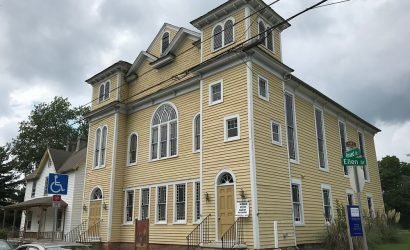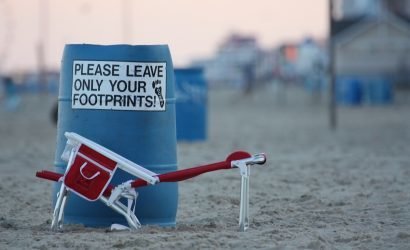Oysters provide an important habitat and food source for numerous estuarine species. Mollusks, worms, crustaceans, fish, and birds all rely on oysters to survive. Oysters form 3-dimensional reefs that attract (directly or indirectly) hundreds species of invertebrates and fishes. The oyster harvesting and regrowth process also employs many watermen in the area.
An individual oyster can filter high amounts of water per day; remove bad phytoplankton, sediment, pollutants, and microorganisms from the water. This process guarantees increased water clarity. Clearer water means better aquatic vegetation, more life forms, and successfully growing ecosystems.
Over the years, the Eastern Shore’s oyster population has varied significantly. Droughts, rainstorms that add too much fresh rainwater to salt water bodies and over plucking of the mollusks have caused a shortage in oyster populations. These shortages aren’t just affecting us locally, but affect the waters up and down the east coast.
Some locals know plenty about oysters, their eco-systems, and how to help rebuild the populations while still enjoying the shelled delicacies.
R-DAD Oysters of Berlin, MD
Billy Taylor could tell you about President Roosevelt’s trip through Berlin, MD in 1939; he could tell you about the 125 German POW’s who worked Berlin farms in 1943; he could tell you about Assateague’s casino, Green Run Lodge; or he could tell you about oysters.
Aside from his vast wealth of historical knowledge, Taylor also knows plenty about oysters, clams, and anything else that can be harvested or caught in the waters of the Eastern Shore.
.JPG) Billy Taylor and wife, Ginger, are the proprietors of R-DAD Ocean Grown Clams and Oysters. Named after their five grandchildren—Rachel, Douglas, Alexis, and Dalton, who all love to eat their grandparent’s products—R-DAD has been in business for two years and is a venture the couple started when they were supposedly “retired.” But it’s been on Billy’s mind for a long time. He’s been on the water in one capacity or another—fishing, clamming, crabbing, tonging for oysters—for 70 years.
Billy Taylor and wife, Ginger, are the proprietors of R-DAD Ocean Grown Clams and Oysters. Named after their five grandchildren—Rachel, Douglas, Alexis, and Dalton, who all love to eat their grandparent’s products—R-DAD has been in business for two years and is a venture the couple started when they were supposedly “retired.” But it’s been on Billy’s mind for a long time. He’s been on the water in one capacity or another—fishing, clamming, crabbing, tonging for oysters—for 70 years.The Taylors set up weekly at area farmer’s markets to sell their oysters, clams, lump crab meat, jumbo lump crab meat, and scallops. Tuesdays they are in Salisbury at the Asbury Church, Wednesdays and Fridays at the Berlin market. These endeavors make for long days, 7 – 10 hours between setup and take down. But the hard work is worth it to bring top quality, locally grown seafood to locals and visitors.
“You put the time in, people get to know you, know your product, and trust you,” says Billy.
In speaking of the oysters, Billy explains why their quality is so superior,
“These are gourmet oysters. You see how they are very deep [indicating a shape similar to a ladle]? They have lots of meat.”
The habitat the oysters are grown in has everything to do with their quality. R-DAD oysters come from Hog Neck Bay between Wallops Island and Cape Charles, VA. They are farmed oysters, grown by H.M. Terry Co. who supplies 2 to 3 million oysters per week to various vendors. According to Billy, these oysters are why the waters in that part of Virginia are so clear.
“They feed on the algae in the water. When they feed during high tide twice a day their shells open and their tentacles come out, looking like a woman’s hair,” describes Billy.
Raising Oysters at Horn Point; Cambridge, MD
The Horn Point Laboratory is located on the Choptank River on the Eastern Shore of Maryland, near Cambridge’s historic town center. Situated on a pristine 880 acre campus, the Horn Point facility is located on an estate formerly owned by the DuPont family, a well-known name throughout Delaware and Maryland.
.jpg) The scientists that work at the Horn Point location are known for their expertise in aquaculture, oyster and fish, and restoration of submerged aquatic vegetation and wetlands. The laboratory is a leader in water quality research focusing on excess nutrients that can produce oxygen deficiency and harmful algal blooms.
The scientists that work at the Horn Point location are known for their expertise in aquaculture, oyster and fish, and restoration of submerged aquatic vegetation and wetlands. The laboratory is a leader in water quality research focusing on excess nutrients that can produce oxygen deficiency and harmful algal blooms.“The crown jewel of Horn Point is this oyster hatchery. It’s something we are all very proud of. It’s the largest on the entire east coast,” said Mike Roma, the University of Maryland Center for Environmental Science Director and also behind the Oyster Recovery Partnership.
Oysters are spawned by scientists in this hatchery lab. After leaving these giant tubs, oyster larvae are place in tanks and fed cultured algae grown in greenhouses. Cultured algae is created and monitored closely at the hatchery. The algae will be fed to the growing oyster larvae. In the algae greenhouse on site there are 18 tanks filled with filtered, sterile seawater. This is where the tiny oysters are fed.
“These green jars are really high in lipids,” said Dr. Don Merit, Director of the University of Maryland Center for Environmental Studies.
Algae from local rivers and waterways is recreated in the laboratory, and then fed to oyster larvae at the hatchery. These brilliant green jars of algae are monitored closely. The larvae are fed four times a day.
Once larvae have successfully set, ambient water is fed into the tank and the spat begin to feed. Spat are then ready to be deployed to grown outside.
“The shells will soon be loaded onto the Robert Lee, a boat used to transport the shells so they can be deposited in the bay,” said Merit.
Protecting the Bay while Growing Oysters; South Point, MD
Local watermen like John Apple and his father have oysters of their own planted in our local bay waters. Apple, an Eastern Shore Native, started Bay Landing Shellfish Company last year.
Bay Landing works cooperatively with other watermen to grow oysters behind Assateague Island using racks on the bottom of the bay. These racks are live wells. The watermen lease about twelve acres of bay bottom from the state to use for cultivation. This method has less impact on the bay bottom than dredging, which pulls a rake across the bottom.
Growing up by the waters of South Point and as an avid surfer, some may have predicted a career as a waterman for Apple. With an entrepreneurial spirit, he and his dad wanted to utilize the resources that their hometown has to offer. Taking after several generations of watermen before them, Apple and his father make a living while enjoying and conserving our local resources.
Oyster aquaculture can contribute to a healthy ecosystem. Farming oysters can reduce stress on wild oyster populations that improve water quality, provide habitat for other organisms, and stabilize shorelines. The Oyster Recovery Partnership helps restore wild oyster populations and educate watermen about sustainable oyster farming techniques.
The newly renovated Skye Bar at Galaxy 66 has a raw bar. Apple can be found shucking local oysters here about three days a week. His Chincoteague Bay oysters have signature saltiness, but the Mojo’s are definitely the saltiest.
Recycling Oyster Shells
.jpg) Environmentally-responsible restaurants are donating their used oyster shells to Oyster Recovery Partnership’s Shell Recycling Alliance (SRA) program. This initiative collects and recycles used oyster and clam shells from restaurants, caterers, and seafood distributors across the Mid-Atlantic region. Oyster shell is a limited natural resource that provides crucial natural habitat for new oysters to grow and is used exclusively by the University of Maryland Center for Environmental Science Horn Point Hatchery for its oyster setting process. Each shell recycled will result in approximately ten baby oysters being returned to the Bay.
Environmentally-responsible restaurants are donating their used oyster shells to Oyster Recovery Partnership’s Shell Recycling Alliance (SRA) program. This initiative collects and recycles used oyster and clam shells from restaurants, caterers, and seafood distributors across the Mid-Atlantic region. Oyster shell is a limited natural resource that provides crucial natural habitat for new oysters to grow and is used exclusively by the University of Maryland Center for Environmental Science Horn Point Hatchery for its oyster setting process. Each shell recycled will result in approximately ten baby oysters being returned to the Bay.“More than 35 restaurants across the state are participating in Maryland’s oyster Shell Recycling Alliance,” said Bryan Gomes, Manager of the Shell Recycling Alliance.
“Ocean City can boast having seven restaurants in this prestigious group.”
Ocean City SRA Members from the Ocean City area include:
- The Bonfire Restaurant
- Harrison’s Harbor Watch
- Reflections Restaurant
- Embers Restaurant
- Higgins Crab House
- Fager’s Island
- Phillips Crab House
“The recycled oyster shells [collected at these restaurants] are transported to the University of Maryland Center for Environmental Science Horn Point Lab Hatchery to be reused and replanted into the Bay with small oysters, spat, attached,” Gomes added.









